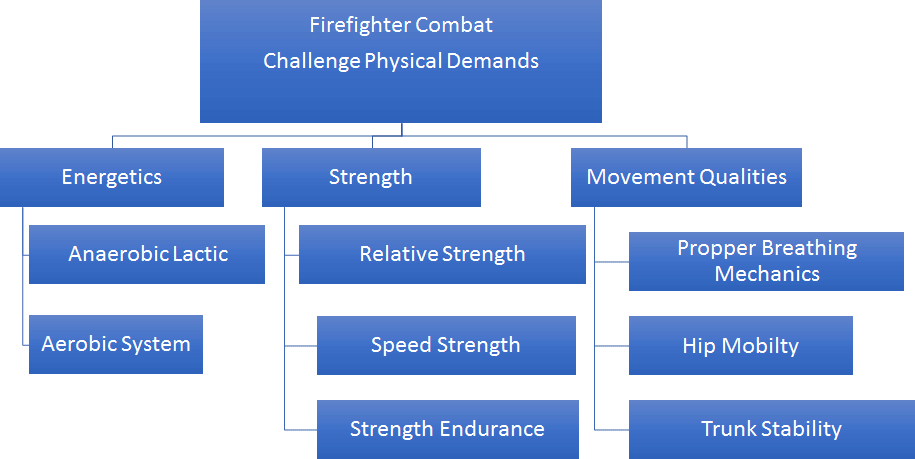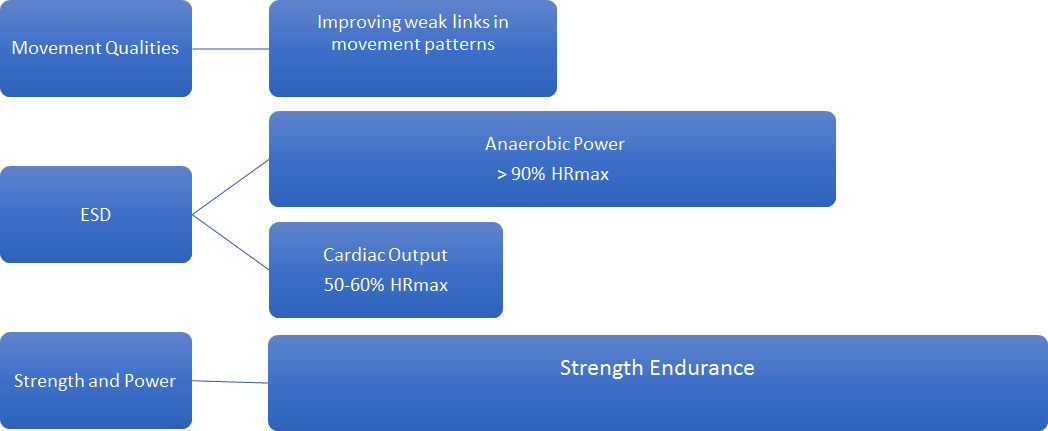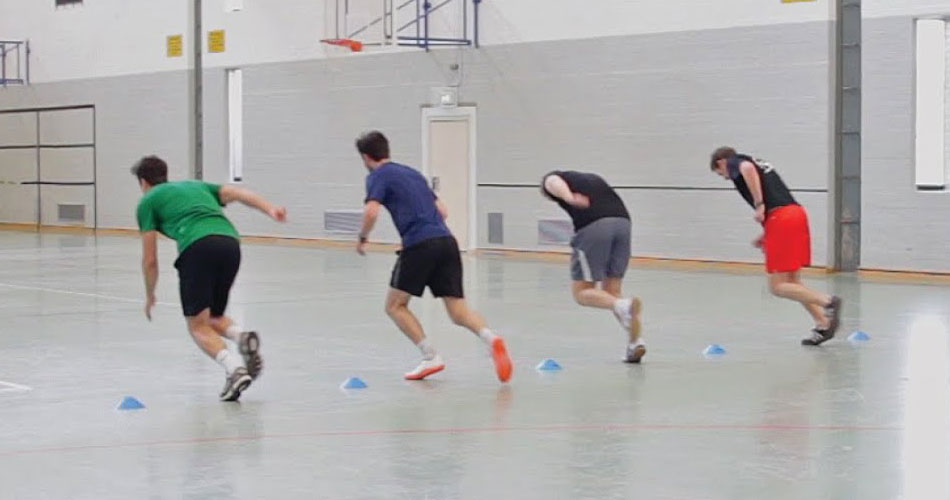Tactical Conditioning Preparation for Firefighter Challenge
Alarm sounds, you are dropping your table tennis pad, Xbox joystick, TV remote control or dumbbell and run to get your gear. All team members are now in the vehicle driving fast to the scene of emergency. This is how regular working day looks like for most of first responders and tactical units, paramedics, firefighters, SWAT teams, etc.
As myself being an ex-Special Force Team member I know how it feels. You need to have an extraordinary physical capability to be able to safely control your mind and body to work in critical situations on daily basis.
Therefore, you must prepare your body with well-planned and organized training program so you can combat all emergency situations effectively.
Physical Demands of Firefighting
During their daily duties on the accident scenes, firefighters lift, carry and pull objects in different weights (usually from 20kg to 80kg). The most demanding firefighting actions require VO2 of 45 ml/kg.min-1, with peak lactate concentration of 6 to 13.2mM.
Firefighter Combat Challenge Competition
Firefighter Combat Challenge is an extremely hard competition, even if it lasts “only” about 70-120 seconds. It consists of 5 events which need to be performed as fast as possible. Each competitor must wear protecting clothes, boots, helmet and high pressure breathing apparatus, weighting around 22kg.
STAGE 1: High-Rise Pack Carry
The competition starts at the base of the tower. The 3” hose load and cover (19kg) may be carried in any manner and must be deposit on the top floor (usually six flairs of 10-12 stairs each). The handrails may be used for climbing the tower. Steps may be taken in multiples on the way up.
STAGE 2: Hoist
A 19kg roll of hose and rope is used for this event. Stage is completed when the roll is pulled up by the rope and is placed on the top floor. Descending the tower, every step must be contacted and handrail must be used.
STAGE 3: Forced entry
The forced entry stage utilizes the Keiser Force Machine (a chopping simulator). Using the 4kg mallet ( special type of hammer which firefighters use to break the door) and with both feet on the diamond plate shaped surface. The competitor must hit the sled, a 72.5kg hydraulic steel beam, with a hammer and push it for a horizontal distance of 1.5m
STAGE 4: Hose Advance
The competitor must run the 42m slalom course and pick up nozzle end of the 1 ¾” charged hose line, and drag it a distance of 22m. The competitor then opens the nozzle, hits a target with the water streams, shuts down the nozzle and place it on the ground.
STAGE 5: Victim Rescue
A 80kg mannequin must be lifted and dragged backwards for a distance of 30m, carrying the dummy is not permitted. The mannequin must be grasped by its clothing or appendages. Time stops when the competitor and “victim” completely cross “safety” finish line.
Top level competitors finish this challenge in 90 seconds or less.
Firefighter Combat Challenge demands
After analyzing competition, and each stage separately, we can define what are the physical demands of this challenge.

Firefighter combat Challenge Physical Demands
Energetic demands of challenge
One must have highly developed anaerobic lactic work capacity, as average HR is over 90% during the competition. Good aerobic base, cardiac output, is a must for efficient recovery during the high intensity bouts.
Strength demands of challenge
As competition includes wearing full gear, weighted around 25kg, with pulling and carrying objects of different weight, 20-80kg, well-developed Relative Strength (strength as it relates to body mass) is essential. All the objects that firefighters pull, push or carry need to be moved fast so Speed Strength (ability to apply lower levels of force rapidly) is one type of strength that need to be developed. To maintain high constant level of strength under fatigue Strength Endurance is also imperative to be highly effective in this competition.
Movement Quality demands of challenge
During whole competition firefighter wears breathing apparatus and mask, which demands well trained breathing mechanics and musculature. Optimal hip flexion and hip extension movement is required to move efficiently thru all stages. Well-developed core musculature, lumbar spine stability and trunk motor control is needed to safely pull, carry and push objects in the stages of competition.
After analyzing all these demands, that we need to develop, we can continue to planning and programming of preparation period.
Planning the Preparation
Assesment
Before we start with preparation we need to determine firefighter’s current physical state. We did Challenge-like test to get next data’s:
- Max HR
- Recovery HR
- Lap time of every stage
- Total time
Since complete test was video recorded we analyze each stage to search for a weak links in specific movements patterns, running up the stairs, pulling, chopping and carrying.
FMS screening was used to determine is there any biomechanical or motor control issues in basic movement patterns.
Periodization
My plan was to make Blocks, for developing each quality needed separately. This is rarely an occasion I’m implementing Block Periodization and not Agile Periodization, which I prefer more when I’m working with the teams. First, I’m working with one athlete and I can control situation. Second we have plenty of time to work, 12 weeks. Third, he is an advanced level athlete, ex volleyball player and CrossFit competitor.

ESD (Energy System Development):We have worked on building an Anaerobic Capacity in range of 80-90% of HRmax and full recovery between the high intensity bouts (usually to 120bpm) with similar movement patterns used in the challenge (stair climbing, pulling, chopping, running, pulling and carrying).
To improve cardiac output, which is needed as a base for recovery during high intensity bouts, we have used 4 stations, done as a circuit, Stair master, Rowing Ergometer, Schwinn Bike and swimming. Duration for each station is from 10-16 minutes, in HR of 50-60% of HRmax.
Strength and Power:Goal of strength training in this phase is to improve Relative Strength and Strength Speed. For Relative Strength improvement, we use Body Armor west of 20kg weight in all bodyweight exercises, simulating weight of safety equipment. Strength Speed is worked with Olympic lifts and weight that is in 80-85% of 1RM, with the rep range 2-5 per set, total 15 quality reps per training. We controlled velocity of the movement with acceleration monitoring system to be sure that each rep is done in good speed of movement.
Movement Quality: After using screening method to analyze basic and specific movement patterns we have worked on improving proper breathing mechanics, hip mobility (flexion and extension), and trunk motor control (diagonal patterns). Most of this work is done in warm up part of training session.
Block 1- GPP/Week 1-4


Weekly Schedule for Block 1
ESD (Energy System Development): We have worked on building an Anaerobic Capacity in range of 80-90% of HRmax and full recovery between the high intensity bouts (usually to 120bpm) with similar movement patterns used in the challenge (stair climbing, pulling, chopping, running, pulling and carrying).
To improve cardiac output, which is needed as a base for recovery during high intensity bouts, we have used 4 stations, done as a circuit, Stair master, Rowing Ergometer, Schwinn Bike and swimming. Duration for each station is from 10-16 minutes, in HR of 50-60% of HRmax.
Strength and Power: Goal of strength training in this phase is to improve Relative Strength and Strength Speed. For Relative Strength improvement, we use Body Armor west of 20kg weight in all bodyweight exercises, simulating weight of safety equipment. Strength Speed is worked with Olympic lifts and weight that is in 80-85% of 1RM, with the rep range 2-5 per set, total 15 quality reps per training. We controlled velocity of the movement with acceleration monitoring system to be sure that each rep is done in good speed of movement.
Movement Quality: After using screening method to analyze basic and specific movement patterns we have worked on improving proper breathing mechanics, hip mobility (flexion and extension), and trunk motor control (diagonal patterns). Most of this work is done in warm up part of training session.
Block 2- Building Work Capacity/Week 5-8.


Weekly schedule for Block 2. This can be changed considered HRV results.
ESD (Energy System Development): Goal is to improve Anaerobic Glycolytic Capacity and Power, in range of >90% of HRmax, with incomplete rest between bouts. Work is done in same stages as in the Challenge. In this phase, we are using, so called, Elevation Training Mask. But not to mimic high altitude training. We use it to build his breathing musculature and get his body used to work in obstructed breathing situation as he will wear a mask in the competition. This is the only occasion I’m using this mask, its highly specific for the goal we are reaching.
In this phase, we are still using Cardiac Output work as in Phase 1 but lasting shorter, 10 minutes for each of 4 stations.
Strength and Power: Goal is to improve Strength Endurance. Using Circuit Strength Training, with weights in the range of 50-60% of Clean 1RM, in next order: Explosive movement (Olympic Lift)-Knee Dominant (Squats, Split Squat, Lunges, Step Ups)-Pulling (Inverted Rows and Pull ups)- Hip Hinge (KB Swings, Deadlifts) – Carries (Farmer walk, Suitcase Carries, Bear Grip Carries). Total time for circuit is from 70-120 seconds, mostly 5-7 reps for each movement.
Movement Quality: Since I am now familiar with athlete’s movement qualities I don’t use any specific screening method. Just analyzing his movement in the training and fixing them in the spot.
Fatigue monitoring and recovery: As this is the most intense Block we need to monitor fatigue with HRV analysis, RPE questioner. Also, we put extra attention on recovery methods such as quality nutrition, sleep, supplementation, cold tubs, massages, etc.

Block 3- Improving Speed (Beat the clock in each Event) /Week 8-12

ESD (Energy System Development): Goal of this Block is to build Anaerobic Alactic Power and speed in each event, with complete rest between bouts. Work is done in same stages as in the Challenge.
Strength and Power: Strength training is planned to improve Speed Strength with Olympic Lifts, weight in range of 60% 1RM, rep range 5-7 . Speed of the movement is monitored with acceleration monitoring system. For Power Development, we use Plyometric for lower body and Medicine ball throws and slams for upper body and rotational power.
Movement Quality: In this phase goal is to analyze weak links in movement patterns for each event and fix it for improving movement efficiency.
Recovery: As this is a final Block complete recovery is most important to peak for competition.

Weekly Schedule for Block 3
I hope this article will help you to understand that firefighters, who are preparing for Challenge are elite level athletes.











Responses